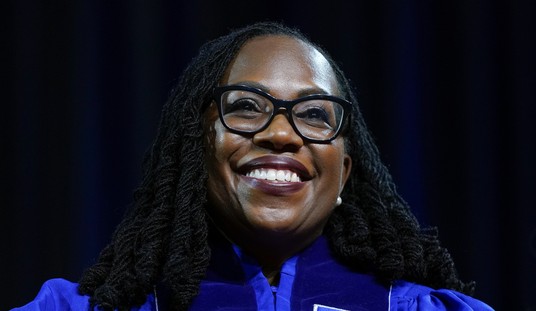“Are there any white kids at your school?”
That’s the question I was asked most often during my six years as an elementary school teacher in Watts, the neighborhood in Los Angeles more famous for its riots than its schools.
My answer was always “no” until last year, when a freckle-faced foster child — let’s call him Tommy — enrolled. I can assure you that Tommy was never given any special treatment for being the only white student at a school made up mostly of Hispanics and African-Americans. In fact, Tommy received the same crappy education as everybody else.
Tommy came to my mind earlier this week when I read what Democratic presidential candidate John Edwards said during an eight-state tour designed to bring attention to poverty issues.
“We don’t just have racial segregation in our schools, we have huge economic segregation,” the ex-senator told a group of 250 people in an impoverished area of Pittsburgh. Pajamas Media blog Say Anything posted the following rejoinder to Edwards’ wish to add diversity to the “two public school systems in America”:
He’s going to encourage income diversity in our schools. So how does that work? Well to make “rich” schools more diverse you send more poor kids there. But to make poor schools more diverse? I guess you have to force rich kids to go there.
Indeed, among Edwards’ proposals is the setting aside of $100 million to help finance buses and implement economic integration programs. It’s almost too easy — after the four hundred dollar haircuts — to levy the charge of hypocrisy against Edwards. But the fact is that those most opposed to ending the status quo of public education are very often the ones who opt to keep their own children away from failing public schools. Writes Clint Bolick in the Wall Street Journal: “When [Edwards] joined the U.S. Senate he sent his children to a religious school because, according to USA Today, the D.C. ‘public schools are deeply troubled.'”
For Edwards, choice in education is apparently only acceptable if parents have his kind of money. While Edwards this week proposed creating magnet schools in inner cities and giving money to schools in wealthy areas that accept low-income students, he made no mention of charter schools or school vouchers.
Why not?
Edwards has claimed in the past that school choice for low-income families would “drain resources” from public schools. (Bolick points out that D.C. public schools lost $132,000 when Edwards chose private school for his kids.)
But Edwards’ claim is simply not true. Alan Bonsteel, president of California Presidents for Educational Choice, has pointed out that since private schools and charter schools cost less than public schools per student, “when a students transfers from a public school to a charter school or a voucher-accepting public school, under normal circumstances, the public schools keep the difference in funding.” For purposes of comparison, California spends $11,800 per year per student while private schools spend barely half of that.
And what about the effectiveness of vouchers? After studying the voucher system in Milwaukee, Associate Professor of Economics at Harvard University Caroline Hoxby reported: “No one lost in Milwaukee. Everyone did better. The kids at the regular public schools did better, and the kids who went to the voucher schools did better.”
That competition leads to better public schools was proven by the Opportunity Scholarship Program, which was initiated in Florida in 1999. Six years later, with 750 students using the opportunity scholarships to attend private schools, public schools had clearly improved. A 2005 Wall Street Journal article found that “nearly half of Florida’s public schools now earn “A” grades, while a similar percentage scored “C’s” when the program started.” More importantly, a 2003 study by researcher Jay Greene found that the schools under threat of vouchers made the most gains.
What should really impress Edwards is the progress made by Florida’s minority students. From 2001 to 2005, the percentage of Hispanic and African-American third-graders reading at or above grade level had risen from 46% to 61% and 36% to 52% respectively. More minority students were also graduating from high school; the graduation rate for Hispanics went from 52.8% before the program was initiated to 64%, while the African-American rate increased from 48.7% to 57.3%. In 2006, the Florida Supreme Court declared the program unconstitutional.
But it’s another decision, this one by the U.S. Supreme Court, that really disturbed Edwards. He disagrees with last month’s ruling rejecting school diversity plans in Seattle and Louisville. He overlooks the fact that Seattle schools have failed miserably to close the achievement gap. The district’s mission statement adopted in 2004 reads, “We must recognize the impact of institutional racism on standard success and question any excuses for not making necessary changes.”
Call those unnecessary changes.
Not only was an Office of Equity and Race Relations created, but former superintendent Raj Manhas ran workshops on cultural diversity and oversaw teams that monitored race relations. The results? Last year 23.8% of African-American 10th-graders passed all three parts of the Washington Assessment of Student Learning.
Educational reform does not have to be defended on partisan grounds. Consider the case of Mike Piscal, a former teacher at the elite Harvard-Westlake in Studio City, California. (Disclaimer: I graduated from Harvard-Westlake in 1995, and Piscal was my 8th-grade basketball coach.) Eventually Piscal (a Democrat) decided he was “going to open a Harvard-Westlake in the hood.” So he created the Inner City Education Foundation, which opened its first charter school – the View Park Prep Elementary – in 1999. Today there are three View Park Preparatory Charter Schools located in South Los Angeles, very close to where I used to teach. In 2005, View Park Prep ranked number one in California for educating African- American students according to the California Department of Education’s Academic Performance Index. There is a combined waiting list of over 4,000 students for 560 seats at the schools. Parents don’t seem to be concerned that over 95% of the student body is African-American.
Little Tommy would stick out just as much at View Park as he did at my school. But his future would be much brighter.
Aaron Hanscom is a freelance writer in Los Angeles.










Join the conversation as a VIP Member